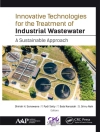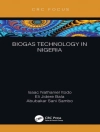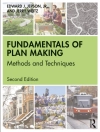The material of this book will derive its scientific under-pinning from basics of mathematics, physics, chemistry, geology, meteorology, engineering, soil science, and related disciplines and will provide sufficient breadth and depth of understanding in each sub-section of hydrology. It will start with basic concepts:
- Water, its properties, its movement, modelling and quality
- The distribution of water in space and time
- Water resource sustainability
Chapters on ‘global change’ and ‘water and ethics’ aim respectively to emphasize the central role of hydrological cycle and its quantitative understanding and monitoring for human well being and to familiarize the readers with complex issues of equity and justice in large scale water resource development process.
Modern Hydrology for Sustainable Development is intended not only as a textbook for students in earth and environmental science and civil engineering degree courses, but also as a reference for professionals in fields as diverse as environmental planning, civil engineering, municipal and industrial water supply, irrigation and catchment management.
表中的内容
Foreword xi
Preface xv
Acknowledgements xvii
A note for students and teachers xix
1 Fundamentals of hydrology 1
1.1 Properties of water 1
1.2 Common water quality parameters 4
1.3 Hydrologic cycle and global water distribution 10
1.4 Units and dimensions 17
1.5 Significant figures and digits 19
2 Surface water hydrology 20
2.1 Lakes 20
2.2 Glaciers 23
2.3 Streams 25
2.4 Watershed concept 25
2.5 Instrumentation and monitoring 26
2.6 Runoff processes and flow measurement 38
2.7 Rainfall-runoff analysis and modelling 43
2.8 Stream processes 49
2.9 Stream characteristics 54
2.10 River and reservoir routing 56
2.11 Scales and scaling 59
2.12 The invisible resource: groundwater 60
2.13 Tutorial 63
3 Groundwater hydrology 70
3.1 Occurrence of groundwater 70
3.2 Movement of groundwater 74
3.3 Hydraulic head 74
3.4 Dispersion 85
3.5 Specialized flow conditions 86
3.6 Groundwater measurements 87
3.7 Groundwater pollution 89
3.8 Composite nature of surfacewater and groundwater 90
3.9 Conjunctive use of surfacewater and groundwater 91
3.10 Tutorial 93
4 Well hydraulics and test pumping 95
4.1 Steady flow 96
4.2 Superposition in space and time 104
4.3 Boundaries and images in flow modelling 106
4.4 Well flow under special conditions 108
4.5 Well losses 109
4.6 Tutorial 111
5 Surface and groundwater flow modelling 114
5.1 Surface water flow modelling 115
5.2 Groundwater flow modelling 118
5.3 Surface and groundwater interactions and coupled/integrated modelling 133
6 Aqueous chemistry and human impacts on water quality 135
6.1 Principles and processes controlling composition of natural waters 136
6.2 Natural hydrochemical conditions in the subsurface 154
6.3 Presenting inorganic chemical data 155
6.4 Impact of human activities 158
6.5 Geochemical modelling 167
6.6 Chemical tracers 169
6.7 Groundwater – numerical modelling of solute transport 171
6.8 Relation between use and quality of water 174
6.9 Industrial use 178
6.10 Tutorial 179
7 Hydrologic tracing 181
7.1 Isotopes and radioactivity 182
7.2 Hydrologic tracers 183
7.3 Tracers and groundwater movement 188
7.4 Stable isotopes of oxygen and hydrogen 194
7.5 Dissolved noble gases 199
7.6 Models for interpretation of groundwater age 207
7.7 Tracers for estimation of groundwater recharge 211
7.8 Tutorial 214
8 Statistical analyses in hydrology 217
8.1 Descriptive statistics 218
8.2 Probability theory 222
8.3 Hydrologic frequency analysis 241
8.4 Nonparametric density estimation methods 245
8.5 Error analysis 246
8.6 Time series analysis 251
8.7 Tutorial 265
9 Remote sensing and GIS in hydrology 268
9.1 Principle of remote sensing 269
9.2 Approaches to data/image interpretation 279
9.3 Radar and microwave remote sensing 281
9.4 Geographic Information Systems (GIS) 284
9.5 Applications in hydrology 288
10 Urban hydrology 297
10.1 Water balance in urban areas 299
10.2 Disposal of waterborne wastes 302
10.3 New approaches and technologies for sustainable urbanization 317
11 Rainwater harvesting and artificial groundwater recharge 322
11.1 Historical perspective 322
11.2 Rainwater harvesting – some general remarks 323
11.3 Watershed management and water harvesting 335
11.4 Tutorial 337
12 Water resource development: the human dimensions 338
12.1 The global water crisis 338
12.2 Global initiatives 340
12.3 Water and ethics 340
12.4 Global water tele-connections and virtual water 346
13 Some case studies 349
13.1 The Yellow River Basin, China 349
13.2 The Colorado River Basin, United States 362
13.3 The Murray-Darling River Basin, Australia 373
13.4 The North Gujarat–Cambay region, Western India 380
14 Epilogue 389
14.1 Water and its properties, quality considerations, movement, and modelling of surface- and groundwater 389
14.2 Distribution of water in space and time 396
14.3 Water resource sustainability 399
Bibliography 403
Index 433
Plate section faces page 172
关于作者
Dr. S.K. Gupta has more than 150 publications in internationally refereed research journals and several books to his credit. Dr. Gupta has also been a Fulbright Fellow at the University of Hawaii at Manoa, an Alexander von Humboldt Fellow at the University of Heidelberg, and a Visiting Fellow at the University of Canberra. He is a Fellow of the National Academy of Sciences, India.












